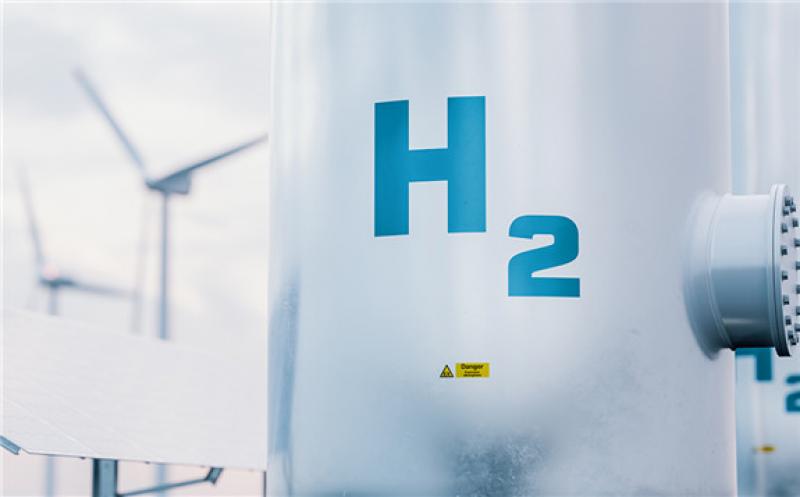A team at MITEI (MIT Energy Initiative) has found that hydrogen-generated electricity can be a cost-competitive option for backing up wind and solar. In a paper published in the journal Applied Energy, they report devising a methodology to estimate the levelized cost of energy (LCOE) of meeting the seasonal nature of variable renewable energy (VRE) resources with either a hydrogen-fired gas turbine (HFGT) or lithium-ion battery system (LI).

Applying the model, they found that the average LCOE associated with meeting this seasonal imbalance is $2400/MWh using a HFGT fueled with green hydrogen and $3000/MWh using a LI. If the HFGT operates with blue hydrogen, the average LCOE decreases to $1560/MWh.
However, the authors noted, the power prices required to justify investment in an HFGT to replace a natural gas-fired gas turbine are considerably higher than those seen in the market today.
Because VREs such as solar and wind power produce electricity only when the sun shines and the wind blows, they need back up from other energy sources, especially during seasons of high electric demand. Currently, plants burning fossil fuels, primarily natural gas, fill in the gaps as peaker plants—a tendency that is likely to grow pari passu with VREs.
Low- and zero-carbon alternatives to greenhouse-gas emitting peaker plants are in development, such as arrays of lithium-ion batteries and hydrogen power generation. But each of these evolving technologies comes with its own set of advantages and constraints, and it has proven difficult to frame the debate about these options in a way that’s useful for policy makers, investors, and utilities engaged in the clean energy transition.
Gençer and Drake D. Hernandez devised a model that makes it possible to pin down the pros and cons of peaker-plant alternatives with greater precision. Their hybrid technological and economic analysis is based on a detailed inventory of California’s power system. While their work focuses on the most cost-effective solutions for replacing peaker power plants, it also contains insights intended to contribute to the larger conversation about transforming energy systems.
California draws more than 20% of its electricity from solar and approximately 7% from wind, with more VRE coming online rapidly. This means its peaker plants already play a pivotal role, coming online each evening when the sun goes down or when events such as heat waves drive up electricity use for days at a time.
Selecting 2019 as their base study year, the team looked at the costs of running natural gas-fired peaker plants, which they defined as plants operating 15% of the year in response to gaps in intermittent renewable electricity. In addition, they determined the amount of carbon dioxide released by these plants and the expense of abating these emissions. Much of this information was publicly available.
Coming up with prices for replacing peaker plants with massive arrays of lithium-ion batteries was also relatively straightforward. Nailing down the costs of hydrogen-fired electricity generation, however, was challenging.
The team considered two different forms of hydrogen fuel to replace natural gas, one produced through electrolyzer facilities that convert water and electricity into hydrogen, and another that reforms natural gas, yielding hydrogen and carbon waste that can be captured to reduce emissions. They also ran the numbers on retrofitting natural gas plants to burn hydrogen as opposed to building entirely new facilities. Their model includes identification of likely locations throughout the state and expenses involved in construction of these facilities.
Gençer said it was kind of shocking to see that there was a place for hydrogen, because the overall price tag for converting a fossil-fuel based plant to one based on hydrogen is very high, and such conversions likely won’t take place until more sectors of the economy embrace hydrogen, whether as a fuel for transportation or for varied manufacturing and industrial purposes.
The researchers believe studies like theirs could help key energy stakeholders make better-informed decisions. To that end, they have integrated their analysis into SESAME, a lifecycle and techno-economic assessment tool for a range of energy systems that was developed by MIT researchers. Users can leverage this sophisticated modeling environment to compare costs of energy storage and emissions from different technologies, for instance, or to determine whether it is cost-efficient to replace a natural gas-powered plant with one powered by hydrogen.